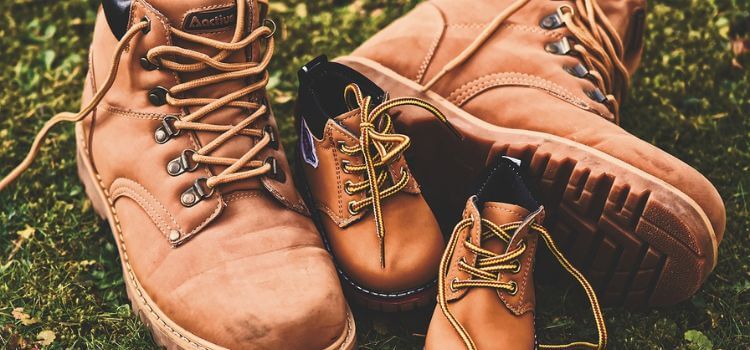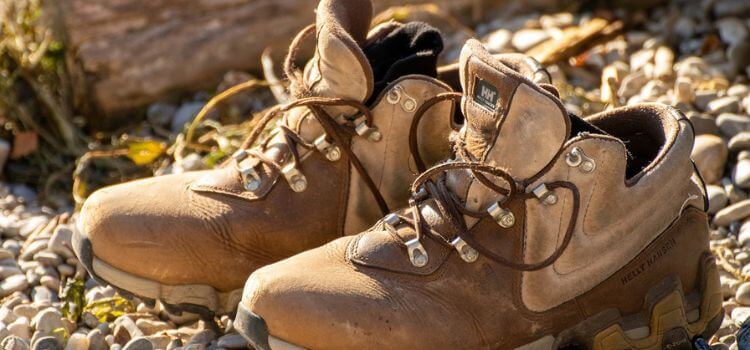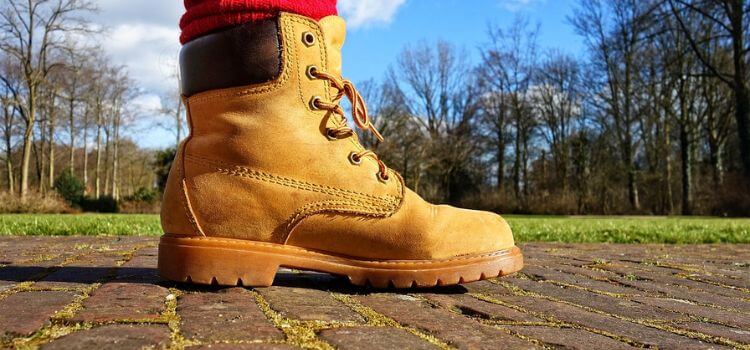Wear a comfortable, flat shoe on the uninjured foot to match the height of the walking boot. Ensure the shoe provides stability and support.
Selecting the right shoe to accompany a walking boot is crucial for maintaining proper balance and gait during recovery. A walking boot, prescribed for foot or ankle injuries, elevates one foot significantly. The other shoe should have a thick sole to compensate for this difference.

The goal is to keep hips level, reducing strain on the uninjured foot, knees, and lower back. Choosing a shoe that closely mirrors the boot’s height prevents limping and aids in a smoother rehabilitation process. Comfort and support take precedence to avoid further discomfort—an essential consideration during a period that already challenges your mobility.
The Challenge Of Choosing Footwear With A Walking Boot
Dealing with an injury is tough. A walking boot helps heal but creates a new problem. What shoe should be worn on the other foot? It’s a riddle for many. This guide makes it easy to find the right pair.
Compensating For Uneven Leg Lengths
Different leg heights are a common issue with walking boots. It’s vital to balance them out. Otherwise, hip and back problems might develop. A shoe lift could be the solution. It levels the leg length and improves walking comfort.
| Boot Height | Shoe Lift Height |
| 1-inch | 1-inch lift |
| 2-inches | 2-inch lift |
Prioritizing Comfort And Stability
Comfort and stability take the lead when choosing the complementary shoe. Look for wide, non-slip soles. They prevent slips and falls. A cushioned insole eases the strain on the foot. Below are top comfort picks:
- Running sneakers
- Orthopedic shoes
- Cushioned flip-flops
Footwear Options Compatible With Walking Boots
Navigating through the day with a walking boot brings unique challenges, particularly when it comes to choosing the appropriate footwear for the uninjured foot. Balance, comfort, and support are key factors when selecting the right shoe to complement a walking boot. Let’s explore footwear options that can help maintain an even gait and provide relief without sacrificing style.
High-top Sneakers For Support
High-top sneakers offer excellent ankle support, making them a solid match with walking boots. They help stabilize the foot and can provide a similar height to that of the boot, aiding in a more symmetrical walking experience. Consider the following aspects while opting for high-top sneakers:
- Look for pairs with adjustable laces or straps for a snug fit.
- Ensure the sole thickness aligns with the walking boot height.
- Opt for cushioned insoles to enhance comfort.
Flexible Sole Shoes For Comfort
Shoes with flexible soles contribute to overall foot comfort and ease of movement. When one foot is in a walking boot, the other requires a shoe that can adapt to different walking surfaces. For flexible-sole shoes, keep in mind the following:
- Choose soles that bend easily but are thick enough.
- Pick materials like rubber or foam for a blend of flexibility and support.
- Ensure the shoe complements the boot’s functionality.
The Importance Of Sole Tread And Grip
Choosing the right shoe to pair with a walking boot is crucial. A good sole tread and grip can make all the difference in your comfort and stability. Let’s dive into why these features matter and what you should look for.

Avoiding Slips And Falls
Preventing accidents is a top priority. A shoe with a strong grip keeps you steady on your feet regardless of surface conditions.
- Look for shoes with non-slip soles.
- Quality rubber or synthetic treads enhance traction.
Tread Patterns For Different Terrains
Matching tread patterns to your environment ensures safety and performance.
| Terrain Type | Recommended Tread Pattern |
| Urban Walking | Shallow, multi-directional treads |
| Rugged Trails | Deep, aggressive lugs |
| Wet Surfaces | Water-channeling grooves |
Be sure to select shoes with a tread designed for your activities. It supports balance and minimizes strain on your walking boot.
Adjusting Laces And Straps For Optimal Fit
Pairing the proper shoe with a walking boot is vital for comfort. The key lies in adjusting laces and straps. Each step should feel secure yet comfortable. Getting the perfect fit means tweaking these elements with precision.
Creating Accommodating Space
Ensure your shoe has enough space to prevent any discomfort. Swelling can occur, so extra room is essential. Here’s how to create space:
- Loosen the laces or straps starting from the top.
- Gradually work downwards, ensuring even looseness.
- Stop if you feel any discomfort or if the foot shifts too much.
Remember, the goal is comfort without sacrificing support.
Securing The Foot In The Shoe
With enough space created, focus on securing the foot. Stability is crucial to pair with your walking boot. Follow these steps:
- Begin by re-tightening the laces from the bottom up.
- Adjust straps to hug the foot’s shape without pinching.
- Walk a few steps. Make sure there’s no slipping or sliding.
Remember, consistent tension across the laces or straps ensures proper security.
Evening Out Leg Length Discrepancy
One challenge you might not expect when wearing a walking boot is a leg length discrepancy. This happens because the walking boot can add height to one leg. Evening out the leg length is crucial to avoid discomfort or even back pain. Let’s discuss practical solutions to keep you balanced and comfortable.
Utilizing Insoles And Heel Lifts
One way to address leg length discrepancy is to use insoles or heel lifts. They fit right inside your regular shoe and give height to your shorter leg while you wear your walking boot. This helps you walk evenly and reduces strain. Insoles and heel lifts come in many sizes and can ensure your comfort and a natural walking posture.
- Heel lifts adjust the height of your shorter leg.
- Insoles provide full-length support.
Some heel lifts are adjustable. This means you can add or remove layers to get the perfect height. This customizability is great as the swelling decreases and your needs change.
Choosing The Right Thickness
Choosing the correct thickness for insoles or heel lifts is crucial. It should match the boot’s height. Your knees and hips will thank you. Your healthcare provider can help measure the difference, or you can use a tape measure at home.
| Component | Function | Notes |
| Heel Lift | Adds height to the heel | Great for minor discrepancies |
| Full Insole | Adds height along the entire foot | Best for larger discrepancies |
Remember to start with a smaller height increase. Then, gradually increase as needed. This gives your body time to adjust. When your legs are even, walking with a boot becomes safer and more comfortable. Keep in mind that wearing the correct thickness supports a proper gait. This helps prevent further injuries.
Dress your unaffected foot in a shoe with a similar sole height to the walking boot. This tip maintains balance. In all cases, choose comfort over style. Safety should always be your top priority.
Considering Season And Weather Adaptations
Navigating the outdoors with a walking boot comes with challenges. Picking the right companion shoe is crucial. Whether it’s a drizzle or a snowstorm, each weather condition demands a specific type of footwear. Let’s dive into the best footwear options that cater to various seasonal elements to keep you balanced and comfortable.
Footwear For Wet Conditions
Rainy days and puddles could spell trouble if you choose the wrong shoe. For wet conditions, prioritize a water-resistant or waterproof shoe. This ensures your foot stays dry and reduces the risk of slips. Look for shoes with a non-slip sole and adequate tread for extra grip. Ventilation is also key to avoiding dampness, which could lead to blisters.
- Breathable, waterproof materials
- Non-slip rubber sole
- Ample tread for grip
Staying Warm In Cold Weather
Cold weather demands a shoe that insulates and protects from the chill. Opt for a shoe with thermal lining and weatherproof capabilities. Ensure the fit allows for thicker socks without restricting circulation. Heat retention is important, so select a shoe with a good closure system to prevent cold air from entering.
- Insulated lining for warmth
- Roomy enough for thick socks
- Secure closure to keep out the cold
Styling Tips For Maintaining Fashion
Dealing with a foot injury doesn’t mean compromising on style. While a walking boot might seem challenging to pair with your wardrobe, with the right styling tips, you can maintain your fashion sense.

Colour Coordination With The Walking Boot
Selecting the right shoe colour to complement your walking boot is essential. Coordinate colours for a cohesive look.
- Choose neutral shoes to match a black or grey boot.
- Accent with accessories like scarves or hats for a pop of colour.
- Use socks to add a playful contrast while keeping it stylish.
Balancing Aesthetics With Functionality
Comfort and safety should never take a back seat to style. Opt for a shoe that balances both. Here are ways to achieve this balance:
| Feature | Importance |
| Non-slip Sole | Prevents slipping and ensures stability with the walking boot. |
| Supportive arch | reduces strain on the foot, which is especially important for the non-injured foot. |
| Closed Toe | Protects toes and complements the bulkier walking boot. |
Remember to consider the height of the non-injured foot’s shoe. Aim for a similar sole thickness to maintain balance and avoid back pain.
When To Seek Expert Advice On Footwear
Finding the right shoe to wear with a walking boot is key. It keeps you comfortable and ensures your body is balanced. Sometimes, you need special help choosing the right footwear. Let’s discuss seeking expert advice.
Consulting With A Podiatrist
Feet are unique. What works for one person might not work for another. If your feet hurt or do not feel right, ask a podiatrist for advice. These foot doctors know all about shoes and boots. They can tell you which shoe is best for your foot.
- Chronic foot problems: For ongoing pain, see a podiatrist.
- Balance issues: They can suggest shoes that help with balance.
- Custom orthotics: Sometimes, you need special shoe inserts.
Professional Fitting For Special Needs
Sometimes, your feet need extra care, either because of an injury or condition. A professional shoe fitter can help. They measure your feet and find the best match for your walking boot, ensuring comfort and support.
| Reasons to Seek Professional Fitting |
| Uneven leg length: When wearing a walking boot, one leg may be shorter. |
| Special shoe features: Some shoes have features for foot problems. |
| Post-surgery care: After foot surgery, the right shoe is important for healing. |
Frequently Asked Questions Of What Shoe To Wear With A Walking Boot
What Shoes Do You Wear After Walking Boots?
After a walking boot, wear stable, cushioned shoes, such as sneakers or orthopedic footwear, to support recovery. Avoid high heels or flip-flops to prevent strain.
What Do You Wear Under A Walking Boot?
Wear a clean, thin sock under a walking boot to prevent irritation and improve comfort. Opt for moisture-wicking fabrics to keep the skin dry.
How Many Hours A Day Should You Wear A Walking Boot?
Typically, wear a walking boot for 1-2 hours initially, increasing as tolerated. Aim for full-day use unless instructed otherwise by a healthcare professional. Always follow your doctor’s specific guidance.
What Not To Do In A Walking Boot?
Avoid getting your walking boot wet. Don’t apply direct heat or partake in high-impact activities. Steer clear of uneven terrain, and don’t ignore pain. Refrain from alterations to your boot’s structure.
Conclusion
Navigating the world of footwear with a walking boot doesn’t have to be a challenge. Choose comfort and stability to complement the boot, ensuring a balanced gait. Remember, sneakers and flat shoes are your go-to allies. As you heal, your shoe choice is a key part of the journey back to full mobility and style.
Related posts:
- How To Clean Cycling Shoes
- Are Skateboarding Shoes Good For Walking
- What Are The Most Comfortable Safety Shoes
- How To Wash Wrestling Shoes
- What Are Lifestyle Sneakers
- How To Clean Bowling Shoes Slide Strip
- Do You Wear Socks With Wrestling Shoes
- How Long Do Slippers Last? Uncover the Lifespan Secrets!
- Do-Win Classic Lifter: Elevate Your Weightlifting Performance
- Where To Find Dance Shoes: Top Stores and Online Shops
